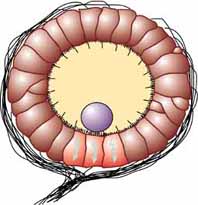스타토시스트
Statocyst
달팽이 지간토펠타 체스소아의 머리 안쪽에 있는 스타토시스트(ss)와 스타토리스(sl)가 있다.
스타토시스트(statocyst)는 두발자,[1] 신나리아인,[2] 체노포란,[3] 에치노데름,[4] 두족류,[5][6] 갑각류 등 일부 수생 무척추동물에서 존재하는 균형 감각 수용체다.[7] 제노투르벨라에서도 비슷한 구조가 발견된다.[8] 스타토시스트(statocyst)는 광물화된 질량(statolis)과 수많은 내향 감각 털(setae)을 포함하는 주머니 모양의 구조로 구성되어 있다. 비석의 관성은 동물이 가속할 때 그것을 세태에 밀어붙이게 한다. 중력에 반응하는 비석석에 의한 세태의 편향은 뉴런을 활성화시켜 방향 변화에 대한 피드백을 동물에게 제공하고 균형을 유지할 수 있게 한다.
즉, 동물의 움직임에 따라 비석이 움직인다. 균형이 깨질 정도로 큰 어떤 움직임도 비석이 작은 털에 빗질하게 하고, 다시 그 균형을 바로잡기 위해 뇌에 메시지를 보낸다.
그것은 신교도들과 다변측정학자들의 공통 조상에 존재했을지도 모른다. 척추동물에서, 스타토피스트는 또한 청력을 위해 진화했고, 오틱 캡슐이 되었다.
청각
오징어와 같은 두족류에서, 스타토시스트들은 듣기 위해 골레아 같은 메커니즘을 제공한다.[9][10] 그 결과, 예를 들어 긴다랑어 오징어는 수온이 8°C 이상일 때 30~500Hz 사이의 저주파 소리를 들을 수 있다.[11]
참고 항목
참조
- ^ Morton, B. (2009). "Statocyst structure in the Anomalodesmata (Bivalvia)". Journal of Zoology. 206: 23–34. doi:10.1111/j.1469-7998.1985.tb05633.x.
- ^ Spangenberg, D. B. (1986). "Statolith formation in Cnidaria: effects of cadmium on Aurelia statoliths". Scanning Electron Microscopy (4): 1609–1618. PMID 11539690.
- ^ Lowe, B. (1997). "The role of Ca2+ in deflection-induced excitation of motile, mechanoresponsive balancer cilia in the ctenophore statocyst". Journal of Experimental Biology. 200 (Pt 11): 1593–1606. doi:10.1242/jeb.200.11.1593. PMID 9202448.
- ^ Ehlers, U. (1997). "Ultrastructure of the statocysts in the apodous sea cucumber Leptosynapta inhaerens (Holothuroidea, Echinodermata)". Acta Zoologica. 78: 61–68. doi:10.1111/j.1463-6395.1997.tb01127.x.
- ^ Clarke, M. R. (2009). "The cephalopod statolithan—introduction to its form". Journal of the Marine Biological Association of the United Kingdom. 58 (3): 701–712. doi:10.1017/S0025315400041345.
- ^ Levi, R.; Varona, P.; Arshavsky, Y. I.; Rabinovich, M. I.; Selverston, A. I. (2004). "Dual Sensory-Motor Function for a Molluskan Statocyst Network". Journal of Neurophysiology. 91 (1): 336–345. doi:10.1152/jn.00753.2003. PMID 14507988.
- ^ Cohen, M. J. (1960). "The response patterns of single receptors in the crustacean statocyst". Proceedings of the Royal Society B: Biological Sciences. 152 (946): 30–49. doi:10.1098/rspb.1960.0020. PMID 13849418. S2CID 29494854.
- ^ Israelsson, O. (2007). "Ultrastructural aspects of the 'statocyst' of Xenoturbella (Deuterostomia) cast doubt on its function as a georeceptor". Tissue and Cell. 39 (3): 171–177. doi:10.1016/j.tice.2007.03.002. PMID 17434196.
- ^ "Scientists Find that Squid Can Detect Sounds".
- ^ "How Squid Hear: It's All in the Motion of the Ocean". 2 February 2011.
- ^ "Squid shown to be able to hear".






